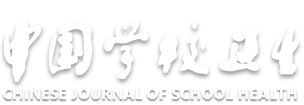Awareness and needs of parents regarding pediatric infectious diseases in kindergartens in Chenghua District of Chengdu
-
摘要:
目的 了解成都市幼儿园儿童家长对儿童传染病知识知晓情况及健康需求,为开展针对性的传染病健康教育提供参考。 方法 采用便利抽样方法抽取成都市成华区54所幼儿园儿童家长3 902名,使用自设问卷进行传染病知识知晓情况调查。 结果 家长对儿童传染病知识知晓率为42.0%,其中“被狗咬伤后的处理措施”知晓率最高(99.6%),“中国传染病分几类”题目知晓率最低(26.7%)。幼儿家长传染病知晓率与家长类别、文化程度、职业及家庭人均月收入相关(χ2值分别为10.81,71.81,93.78,25.17,P值均<0.05)。对儿童传染病防控知识的需求调查显示,家长最主要的信息获取渠道是学校传染病预防知识的普及(85.5%);最希望通过专业机构提供的信息资料获取相关信息(96.6%);家长最希望获取了解的传染病是新型冠状病毒肺炎(91.9%);最希望获得传染病相关知识的时机是根据传染病的季节性安排(67.5%)。 结论 家长对儿童传染病知识知晓率处于中等水平,对获取传染病相关知识的渠道较局限;学校可开展针对性的健康教育以提升学龄前儿童家长对儿童传染病知识的知晓率。 Abstract:Objective To understand the awereness and health needs of parents in regards to infectious diseases in kindergartens in Chengdu, and to provide a reference for carrying out targeted health education on infectious diseases. Methods The parents of kindergarten children in Chenghua District of Chengdu was selected by convenient sampling, and a self-designed questionnaire was used. Results The rate of awareness among parents regarding pediatric infectious diseases was 42.0%, among which the awareness rate of "treatment measures following a dog bite" was the highest (99.6%), and "the awareness rate of infectious disease classifications in China" was the lowest (26.7%). The awareness rate was related to family role, education level, occupation and income level (χ2=10.81, 71.81, 93.78, 25.17, P < 0.05). The survey examined the demand for knowledge regarding pediatric infectious disease prevention and control, and revealed that parents primarily obtained such information from the school class group (85.5%). The most desirable way of obtaining relevant information was from information provided by professional institutions (96.6%), the infectious disease that parents most wanted to know about was the 2019 novel coronavirus (91.9%), and the most desirable time to acquire knowledge about infectious diseases depended on the seasonal arrangement of infectious diseases (67.5%). Conclusion The awareness rate of parents about children's infectious diseases is in the middle level, and the channels for acquiring the knowledge about infectious diseases are relatively limited. Schools can carry out targeted health education in order to raise the awareness rate of parents of preschool children about children's infectious diseases. 1) 利益冲突声明 所有作者声明无利益冲突。 -
表 1 不同人口学特征调查对象儿童传染病知识知晓率比较
Table 1. Comparison of the awareness rate of infectious disease knowledge among children among different demographic characteristics
人口学指标 选项 人数 知晓人数 χ2值 P值 家长类别 父亲 828 313(37.8) 10.81 0.01 母亲 3 030 1 311(43.3) 祖父母/外祖父母 23 7(30.4) 其他 21 6(28.6) 性别 男 841 315(37.5) 8.90 < 0.01 女 3 061 132(43.2) 文化程度 初中及以下 298 75(25.2) 71.81 < 0.01 高中及中专 866 306(35.3) 大专及本科 2 542 1 152(45.3) 硕士及以上 196 104(53.1) 职业 公务员/事业单位 764 315(41.2) 93.78 < 0.01 医务人员 195 146(74.9) 企业/公司职员 976 408(41.8) 其他 1 967 768(39.0) 家庭人均月收入/元 ≤3 000 317 104(32.8) 25.17 < 0.01 3 001~6 000 955 361(37.8) 6 001~10 000 1 115 502(45.0) >10 000 1 515 670(44.2) 年龄/岁 ≤30 1 010 430(42.6) 1.46 0.48 31~40 2 647 1 113(42.0) >40 245 94(38.4) 注:()内数字为知晓率/%;家长类别中其他指亲属或保姆;职业中其他指自由职业/无业/待业人群等。 表 2 家长对儿童传染病防控知识需求(n=3 902)
Table 2. Survey of parents' demand for knowledge of prevention and control of children's infectious diseases(n=3 902)
传染病知识需求 选项 报告人数 获取传染病防控知识的途径 学校传染病防控知识的普及 3 338(85.5) 电视 3 233(82.9) 疾控/医院的宣传资料 2 983(76.4) 亲戚朋友或同事 1 673(42.9) 浏览非专业机构网页 1 229(31.5) 最希望获取传染病信息的来源 专业机构提供的信息资料 3 770(96.6) 直接咨询医生 2 131(54.6) 浏览非专业机构网页 512(13.1) 最希望获取的传染病防控知识 新型冠状病毒肺炎 3 586(91.9) 手足口病 3 493(89.5) 流行性感冒 3 407(87.3) 感染性腹泻 3 309(84.8) 水痘 2 843(72.9) 麻疹 2 818(72.2) 希望获得传染病相关知识的 根据传染病的季节性安排 2 635(67.5) 时机 都可以 931(23.9) 疾病高发期 321(8.2) 注:()内数字为报告率/%。 -
[1] 李永宸, 何钰怡. 近代中国学校传染病预防[J]. 中国学校卫生, 2020, 41(9): 1288-1291. doi: 10.16835/j.cnki.1000-9817.2020.09.003LI Y C, HE Y Y. Prevention of infectious diseases in schools in modern China[J]. Chin J Sch Health, 2020, 41(9): 1288-1291. (in Chinese) doi: 10.16835/j.cnki.1000-9817.2020.09.003 [2] 顾娅芬. 临沧市普通中小学传染病疫情分析[J]. 中国公共卫生, 2008, 24(3): 343. doi: 10.3321/j.issn:1001-0580.2008.03.068GU Y F. Epidemic analysis of infectious diseases in ordinary primary and middle schools in Lincang City[J]. Chin J Public Health, 2008, 24(3): 343. (in Chinese) doi: 10.3321/j.issn:1001-0580.2008.03.068 [3] 杨艰萍, 王频, 莫伟文, 等. 上海市学校传染病防治管理现状与对策[J]. 中国学校卫生, 2007, 28(2): 140-142. https://www.cnki.com.cn/Article/CJFDTOTAL-XIWS200702023.htmYANG J P, WANG P, MO W W, et al. Current situation and countermeasures of school infectious disease control and management in Shanghai[J]. Chin J Sch Health, 2007, 28(2): 140-142. (in Chinese) https://www.cnki.com.cn/Article/CJFDTOTAL-XIWS200702023.htm [4] BUTLER J, GREGG L, CALAM R, et al. Parents' perceptions and experiences of parenting programmes: a systematic review and Metasynthesis of the qualitative literature[J]. Clin Child Fam Psychol Rev, 2020, 23(2): 176-204. doi: 10.1007/s10567-019-00307-y [5] 吴光煜, 陈志海, 孙玉梅. 传染病护理学[M]. 3版. 北京: 北京大学医学出版社, 2014WU G Y, CHEN Z H, SUN Y M. Infectious disease nursing[M]. 3 ed. Beijing: Peking University Medical Press, 2014. (in Chinese) [6] 贾荣昌. 2009—2018年融水县6岁以下儿童法定报告传染病流行特征分析[J]. 应用预防医学, 2020, 26(3): 235-237, 240. https://www.cnki.com.cn/Article/CJFDTOTAL-GXYX202003020.htmJIA R C. Analysis of epidemic characteristics of notifiable infectious diseases among children under 6 years old in Rongshui County from 2009 to 2018[J]. Appl Prev Med, 2020, 26(3): 235-237, 240. (in Chinese) https://www.cnki.com.cn/Article/CJFDTOTAL-GXYX202003020.htm [7] 孙秀梅, 刘晓峰, 杨玉清, 等. 北京市通州区2005—2015年儿童青少年法定传染病流行特征分析[J]. 中国学校卫生, 2017, 38(8): 1215-1218. doi: 10.16835/j.cnki.1000-9817.2017.08.027SUN X M, LIU X F, YANG Y Q, et al. Epidemic characteristics of legal infectious diseases among children and adolescents in Tongzhou District of Beijing from 2005 to 2015[J]. Chin J Sch Health, 2017, 38(8): 1215-1218. (in Chinese) doi: 10.16835/j.cnki.1000-9817.2017.08.027 [8] 姜路明, 朱匡纪, 楼秒芬, 等. 金华市婺城区2008—2017年儿童青少年法定传染病流行特征分析[J]. 中国初级卫生保健, 2018, 32(10): 50-52, 55. https://www.cnki.com.cn/Article/CJFDTOTAL-ZGCW201810019.htmJIANG L M, ZHU K J, LOU M F, et al. Epidemic characteristics analysis of legal infectious diseases among children and adolescents in Wucheng District, Jinhua City from 2008 to 2017[J]. Chin Prim Health Care, 2018, 32(10): 50-52, 55. (in Chinese) https://www.cnki.com.cn/Article/CJFDTOTAL-ZGCW201810019.htm [9] 毛雪梅. 家长健康教育是儿童保健工作的关键[J]. 临床研究, 2016, 24(2): 119. https://www.cnki.com.cn/Article/CJFDTOTAL-YYCY200922158.htmMAO X M. Parents' health education is the key to children's health care[J]. Clin Res, 2016, 24(2): 119. (in Chinese) https://www.cnki.com.cn/Article/CJFDTOTAL-YYCY200922158.htm [10] 曹远, 柴晶鑫, 于彤, 等. 北京市幼儿父母新型冠状病毒肺炎防控知识知晓情况及其影响因素分析[J]. 中国健康教育, 2020, 36(8): 688-692. https://www.cnki.com.cn/Article/CJFDTOTAL-ZGJK202008003.htmCAO Y, CHAI J X, YU T, et al. Knowledge about prevention and control of new coronavirus pneumonia among parents of children in Beijing and its influencing factors[J]. Chin Health Educ, 2020, 36(8): 688-692. (in Chinese) https://www.cnki.com.cn/Article/CJFDTOTAL-ZGJK202008003.htm [11] 邓艳梅. 家长儿童保健知识知晓率及影响因素调查分析[J]. 中国保健营养, 2017, 27(11): 331. https://www.cnki.com.cn/Article/CJFDTOTAL-ZFYB201102037.htmDENG Y M. Investigation and analysis on the awareness rate and influencing factors of parents and children's health care knowledge[J]. Chin Health Nutr, 2017, 27(11): 331. (in Chinese) https://www.cnki.com.cn/Article/CJFDTOTAL-ZFYB201102037.htm [12] 孔雨薇, 王立贵, 宋宏彬, 等. 学校传染病防控的关键环节[J]. 现代预防医学, 2020, 47(6): 1113-1115, 1129. https://www.cnki.com.cn/Article/CJFDTOTAL-XDYF202006039.htmKONG Y W, WANG L G, SONG H B, et al. Key links of infectious disease prevention and control in schools[J]. Mod Prev Med, 2020, 47(6): 1113-1115, 1129. (in Chinese) https://www.cnki.com.cn/Article/CJFDTOTAL-XDYF202006039.htm [13] 刘艳. 学校、托幼机构传染病防治工作现状及改善策略[J]. 中国急救医学, 2018, 38(z2): 266.LIU Y. Current situation and improvement strategy of infectious disease prevention in schools and kindergartens[J]. Chin J Emerg Med, 2018, 38(z2): 266. (in Chinese) -

 点击查看大图
点击查看大图
计量
- 文章访问数: 425
- HTML全文浏览量: 159
- PDF下载量: 157
- 被引次数: 0





 下载:
下载: